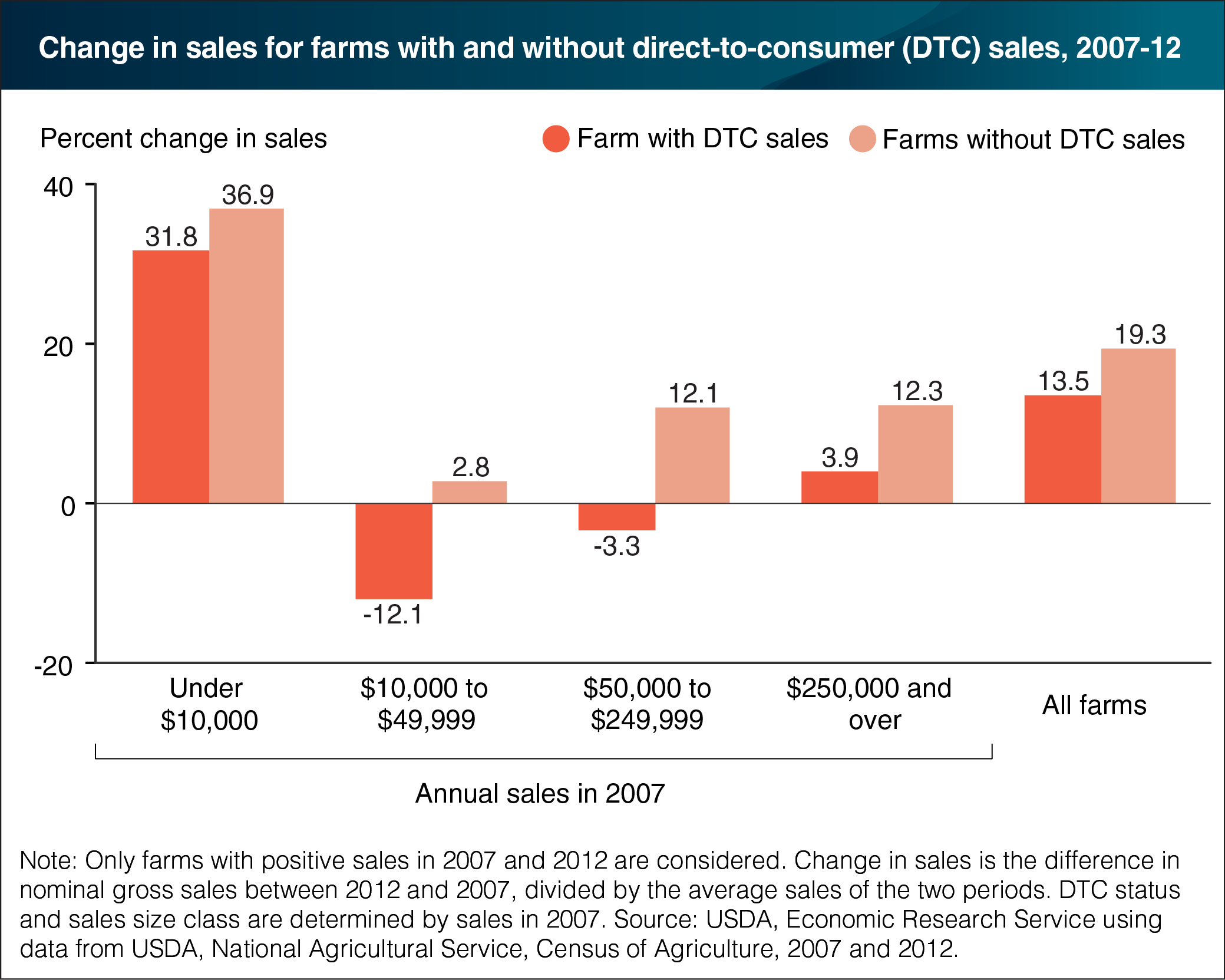Farms selling directly to consumers saw smaller increases in sales than other farms between 2007 and 2012
- by Nigel Key
- 4/7/2016

Between 2007 and 2012, farms using direct-to-consumer (DTC) marketing had smaller growth in nominal gross sales (13.5 percent), on average, than farms using traditional marketing channels (19.3 percent). In addition, gross sales on farms using DTC marketing grew more slowly in each size class (as measured by 2007 sales). The slower growth for farms with DTC sales may stem from several factors. The 2012 Census of Agriculture shows farms using DTC marketing employ substantially more labor across all sales categories than farms without direct sales. Therefore, farms with DTC sales may need to hire additional workers at a lower scale of production, and the associated transaction costs may provide an obstacle to growth. Off-farm income opportunity may also play a role, as farms with DTC sales are more likely to have total household incomes both less than $50,000, and less than $20,000. The lower total household income for farms with DTC sales may reflect fewer off-farm income opportunities, leading these farms to continue farming even if they have less ability to expand production. This chart is found in the March 2016 Amber Waves feature, “Local Foods and Farm Business Survival and Growth.”


